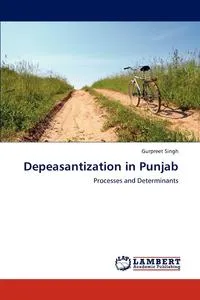Depeasantization in Punjab
Автор: Gurpreet Singh
Переплёт: Мягкая обложка
📙 Indian economy has been experiencing high rate of growth and a structural transformation during the last two decades. The growth attained is skewed with manufacturing and services sectors being the forerunners and the agricultural sector lagging behind. The agricultural growth has been decelerating since the last two decades. It has been argued that the severity of the on-going agrarian crisis would have forced the peasants to leave agriculture and to join the non-cultivation sector where there has been expansion of employment opportunities. The process is evident in all the regions but there exists significant inter-regional variations. The North-western region, in particular Punjab, has shown a relatively higher fall in the proportion of workforce engaged in agriculture. The shrinking size of the peasantry is referred to as depeasantization. The present study examines the processes and determinants of depeasantization in Punjab and further examines the type of mobility taking place among various classes of peasants.
Мнения
